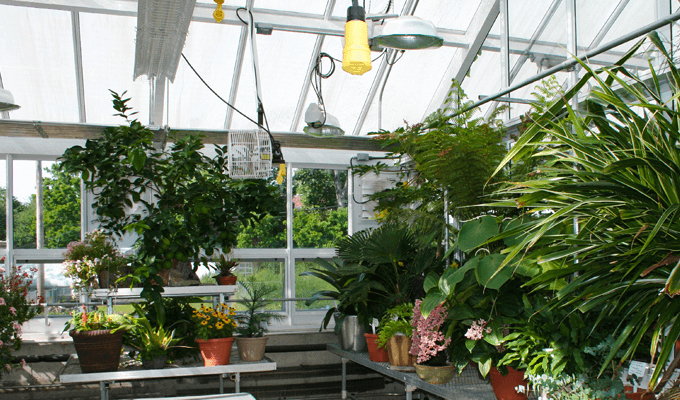
Institutional Greenhouses
An institutional greenhouse is any greenhouse designed for an organization. The primary focus of the greenhouse is simply to grow plants and enjoy horticulture. Scientific research can be performed, and the plants can be sold as in a commercial greenhouse, but institutional greenhouses are designed more for pleasure gardening.

Educational Applications
Institutional greenhouses are found in an array of applications; the most popular being educational greenhouses in schools. All levels of education have greenhouses from elementary to high school. College level greenhouses tend to lend themselves to research purposes. The education greenhouses can be designed to meet the exact needs of a school. In an elementary greenhouse, benches can be manufactured to lower heights to accommodate younger children. Another option that may be found in an elementary greenhouse would be ground beds where the students can plant seedlings directly into the ground. High school greenhouses tend to become more advanced growing environments. The size of the greenhouse may need to be expanded to accommodate larger classes and more involved growing. Shading can be added for the cultivation of orchids, along with education greenhouse accessories that will monitor temperature and humidity.
Therapeutic Applications
Prison greenhouses are another popular application for institutional greenhouses. Many prisons utilize greenhouses as a way of training and therapy for inmates. Any gardener knows that growing plants can be relaxing and releases stress, two practices which are greatly needed in prisons. Often times a prison greenhouse is used to teach the inmates new life skills that will help them to obtain employment when released. The greenhouses can be designed around ADA restrictions making it a sound choice for any institutional application. Multiple environments tend to be created with this type of greenhouse to provide instruction in different sectors of horticulture. As an example, the first room would be devoted to hydroponic gardening, the second to traditional soil vegetables, and the third could be an area with a pond and tropical where the students can study aquaculture.
Aluminum Frame
The beauty of a Solar Innovations® institutional greenhouse is the material used to construct the greenhouse and the ability to customize every portion of the structure. Aluminum is used in the construction of all Solar Innovations, Inc. greenhouses. Rotting, rusting, warping, and constant finishing maintenance are not concerns with aluminum greenhouses. There are eight standard frame finishes available and any custom color the job may require. Glazing options for the greenhouse include glass and polycarbonate. There are pros and cons to each selection.
Polycarbonate vs. Glass
Polycarbonate greenhouses tends to be less expensive than glass and requires less cleaning, but can sometimes affect light infiltration and scratches easier than glass. Glass is the traditional choice of greenhouses, allows for optimum light infiltration and is available in numerous thicknesses, types and tints. Any element within the greenhouse can be customized, from the frame, glazing, shape, size, and the greenhouse equipment used to operate the structure.
Greenhouse Accessories
The different environments can be fitted with its own set of accessories. Each room can have its own fans, misting systems, heating and cooling. Any application can use the technique of multiple environments. Nursing homes can have different zones for growing shade plant and heat loving plants. Hospitals and rehab facilities would benefit from an herb garden or a vegetable garden, or both areas integrated into one structure. The possibilities are unlimited and Solar Innovations® will work with you to create the best greenhouse for your application.





